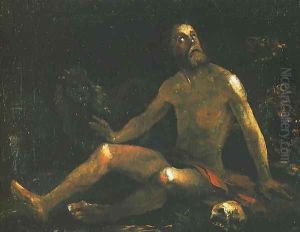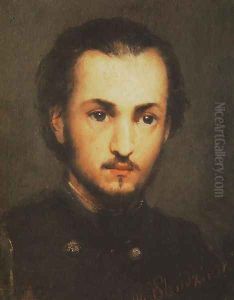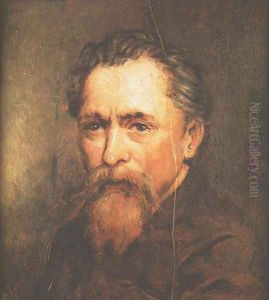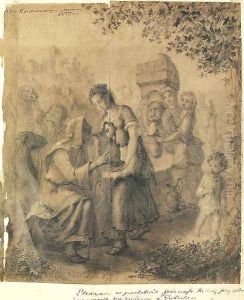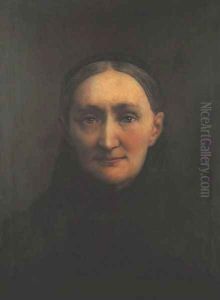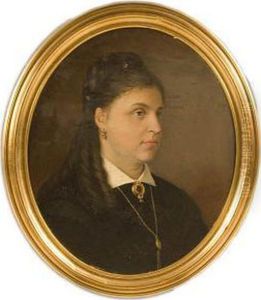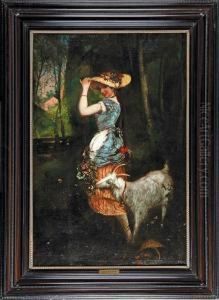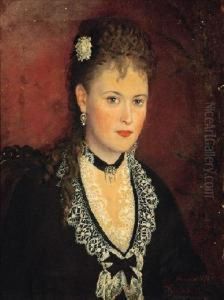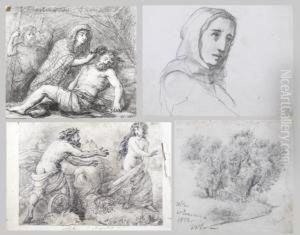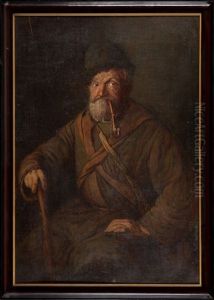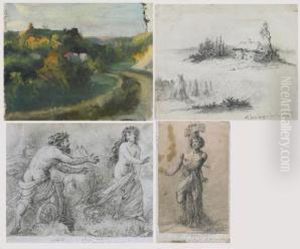Wincenty Slendzinski Paintings
Wincenty Ślendziński was a Polish painter, born on November 11, 1837, in the village of Boruny in the Grodno Governorate of the Russian Empire (present-day Belarus). He was an artist predominantly known for his historical and religious paintings, which were deeply rooted in the Romantic traditions of the 19th century.
Ślendziński's early life was spent in his native land where he developed a passion for art. Seeking to refine his skills, he moved to St. Petersburg and enrolled in the Imperial Academy of Arts, where he studied from 1858 to 1865. During his time at the Academy, he was awarded several medals for his work, which reflected his growing proficiency and the recognition he was gaining among his peers.
Upon completing his studies, Ślendziński returned to Poland, settling in Warsaw. He became an active participant in the Polish art scene, engaging with various artists and becoming a member of the Warsaw Society of Friends of Fine Arts. His art often depicted scenes from Polish history, capturing the struggles and the spirit of the Polish people during the partitions of Poland. These works resonated with the national sentiments of the time, earning him a respected place among Polish artists.
In addition to historical subjects, Ślendziński also painted religious works, creating altarpieces and frescoes for churches. His religious paintings were characterized by a dramatic use of light and shadow, a meticulous attention to detail, and a deep sense of piety and reverence.
Throughout his career, Ślendziński faced the challenges of working under the partitions of Poland, with the country divided among Russia, Prussia, and Austria. Despite these difficulties, he remained committed to his art and his nation, contributing to the cultural preservation of Polish heritage through his paintings.
Wincenty Ślendziński's legacy is one of dedication to Polish art and history. His works are preserved in various museums and collections in Poland, serving as a testament to his skill and his love for his homeland. He passed away on February 1, 1909, leaving behind a body of work that continues to be celebrated for its historical significance and artistic merit.
